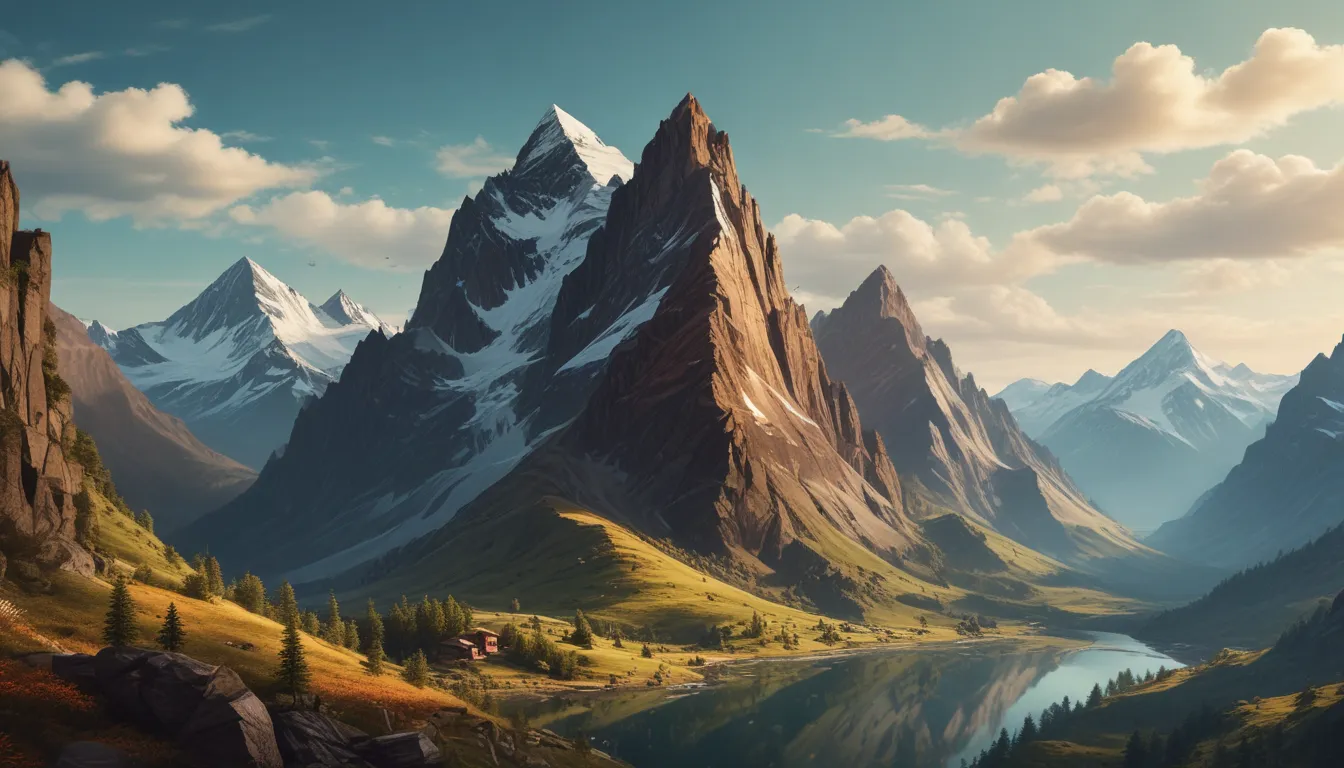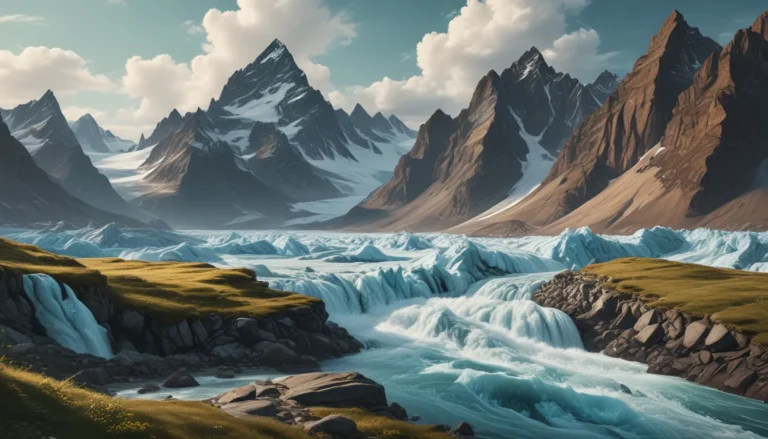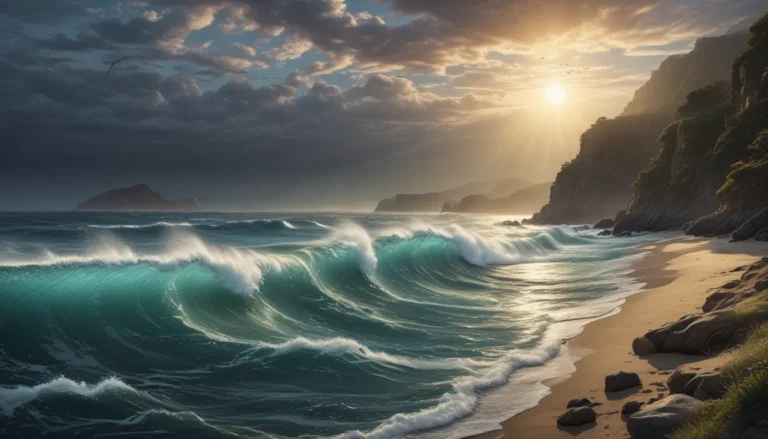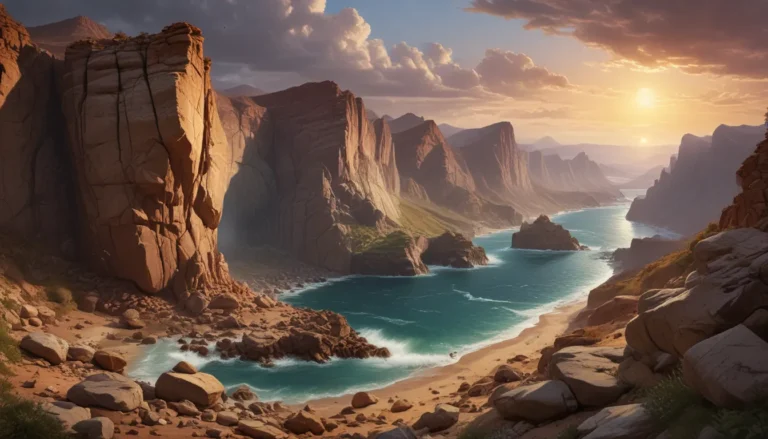A Note About Images: The images used in our articles are for illustration purposes only and may not exactly match the content. They are meant to engage readers, but the text should be relied upon for accurate information.
Are you ready to embark on an adventure that will take you across continents to explore the captivating world of pop-up mountains? These extraordinary geological formations are not only awe-inspiring but also hold a wealth of fascinating facts waiting to be uncovered. From their peculiar origins to their impressive heights, pop-up mountains offer a glimpse into nature’s incredible power and diversity. Join us as we delve into the mysteries, unveil the secrets, and discover the astonishing facts that make pop-up mountains truly exceptional.
Unveiling the Mystery Behind Pop-Up Mountains
Pop-up mountains are a geological phenomenon that continues to fascinate scientists and adventurers alike. These incredible formations rise abruptly from the Earth’s surface, sometimes reaching towering heights. But what exactly causes these mountains to “pop up” and capture our imagination? Let’s explore the breathtaking world of pop-up mountains.
The Astonishing Speed of Formation
One of the most astonishing facts about pop-up mountains is the speed at which they form. Unlike traditional mountains that take millions of years to develop, pop-up mountains can emerge within a matter of days or even hours. This rapid geological transformation is truly a sight to behold.
Understanding Tectonic Activity
Tectonic activity plays a pivotal role in the creation of pop-up mountains. When two tectonic plates collide or experience intense pressure, it causes the Earth’s crust to buckle and fold. This folding creates the distinctive shape of a pop-up mountain, giving it its unique appearance.
Embracing the Unpredictable Nature
Perhaps one of the most intriguing aspects of pop-up mountains is their unpredictable nature. They can emerge suddenly in areas that were previously flat or gently rolling, surprising both scientists and locals. This element of surprise has led to numerous expeditions and studies aimed at unraveling the mysteries of these enigmatic formations.
Marveling at the Impressive Heights
Pop-up mountains can reach staggering heights, sometimes soaring thousands of feet into the sky. These monumental geological features create awe-inspiring landscapes that leave visitors in complete wonder. Standing at the summit of a pop-up mountain offers breathtaking panoramic views of the surrounding areas.
Discovering Thriving Biodiversity
Despite their harsh and rugged terrain, pop-up mountains often host a surprising array of biodiversity. The abrupt rise in elevation creates unique habitats for flora and fauna to thrive. Rare and endemic species can be found within the nooks and crevices of these mountains, adding to their allure.
Uncovering Geological Time Capsules
Pop-up mountains act as captivating geological time capsules, preserving a record of Earth’s history within their layers. By studying the rocks and fossils found in these mountains, scientists can gain insights into ancient ecosystems, climate patterns, and even geological events that occurred millions of years ago.
Embracing the Myth and Legends
Like many natural wonders, pop-up mountains often hold a place in local myths and legends. From stories of ancient gods shaping the landscape to tales of hidden treasures concealed within these peaks, these myths add an element of mystique and wonder to the already remarkable allure of pop-up mountains.
The Impact on Surrounding Ecosystems
The emergence of pop-up mountains can have a profound impact on the surrounding ecosystems. The sudden change in topography alters the flow of water, creates new habitats, and disrupts existing ecological systems. Scientists study these effects to understand how nature adapts and evolves in response to such dramatic geological events.
The Geologists’ Playground
Pop-up mountains serve as a playground for geologists, who are eager to unravel the complex processes behind their formation. These scientists analyze the layers, rocks, and structural characteristics of these mountains to gain insights into the dynamics of tectonic plate movements and the geological forces that shape our planet.
Exploring the Popular Geotourism Destinations
With their stunning beauty and geological significance, pop-up mountains often become popular geotourism destinations. People from around the world flock to these sites to witness firsthand the remarkable geological processes that have shaped our planet throughout millions of years. Such tourism can contribute to local economies and awareness of the importance of geological conservation.
Challenging Research Expeditions
Research expeditions to pop-up mountains are not for the faint of heart. Setting up camps, collecting samples, and conducting thorough geological surveys in remote and rugged terrains pose a significant challenge. However, the knowledge gained from these expeditions is invaluable in expanding our understanding of Earth’s geological history.
Marveling at the Hauntingly Beautiful Landscapes
Pop-up mountains create hauntingly beautiful landscapes that captivate both artists and photographers. The juxtaposition of towering peaks against vast plains or pristine lakes offers a visual spectacle that is sure to leave an indelible mark on anyone fortunate enough to witness it.
Understanding the Power of Erosion
Over time, the forces of erosion play their part in shaping and sculpting pop-up mountains. Wind, water, and ice erode the peaks and valleys, creating intricate patterns and revealing layers of geological history. This ongoing process adds to the ever-evolving charm and allure of these majestic formations.
The Connection to Plate Tectonics
Pop-up mountains exemplify the dynamic nature of our planet’s plate tectonics. The collision and interaction of tectonic plates create a powerful force that gives rise to these mountains. Studying pop-up mountains provides valuable insights into the processes that shape Earth’s continents and oceans.
The Potential Hazards
Although pop-up mountains are undeniably awe-inspiring, they can also pose potential hazards. The rugged terrain, steep slopes, and unstable geological conditions make these mountains treacherous for inexperienced hikers and climbers. It is essential to exercise caution and be well-prepared when venturing into these remarkable landscapes.
Recognizing the Constant State of Change
Pop-up mountains are in a constant state of change, undergoing geological transformations that are imperceptible to the human eye. The gradual movement of tectonic plates continues to shape and reshape these mountains, reminding us of the ever-evolving nature of our planet.
In conclusion, the 18 unbelievable facts about pop-up mountains highlight their mesmerizing beauty, geological significance, and the mysteries they hold. From their rapid formation to their impact on surrounding ecosystems, these remarkable formations continue to captivate and inspire both scientists and explorers. So, the next time you come across the term “pop-up mountains,” prepare to be amazed by the wonders hidden within their towering peaks.
FAQs About Pop-Up Mountains
Q: What exactly are pop-up mountains?
A: Pop-up mountains are geological formations that appear suddenly and rise rapidly from the Earth’s surface, typically caused by tectonic forces.
Q: How high can pop-up mountains reach?
A: Pop-up mountains can vary in height, with some reaching several thousand feet.
Q: Are pop-up mountains permanent?
A: Pop-up mountains can be temporary or permanent, depending on various factors.
Q: How fast do pop-up mountains form?
A: The formation of pop-up mountains can occur over a relatively short period, depending on geological processes.
Q: Can pop-up mountains cause earthquakes?
A: Yes, the movement associated with pop-up mountains can trigger earthquakes.
Q: Are there any famous pop-up mountains?
A: Yes, there are several famous pop-up mountains worldwide, including the Himalayas and the Andes.
Q: Can you hike or climb pop-up mountains?
A: Yes, many pop-up mountains are popular destinations for hikers and climbers, but caution is advised.
Q: Can pop-up mountains form underwater?
A: Yes, pop-up mountains can also form underwater, known as seamounts.
Q: What research is being done on pop-up mountains?
A: Scientists are actively studying pop-up mountains to better understand their formation and impact on the environment.
In conclusion, pop-up mountains are truly fascinating natural wonders that offer a glimpse into the dynamic forces shaping our planet. Whether you’re a geology enthusiast or simply appreciate the beauty of nature, these incredible formations are sure to inspire and awe. Let the marvels of pop-up mountains ignite your curiosity and appreciation for the wonders of our world.






